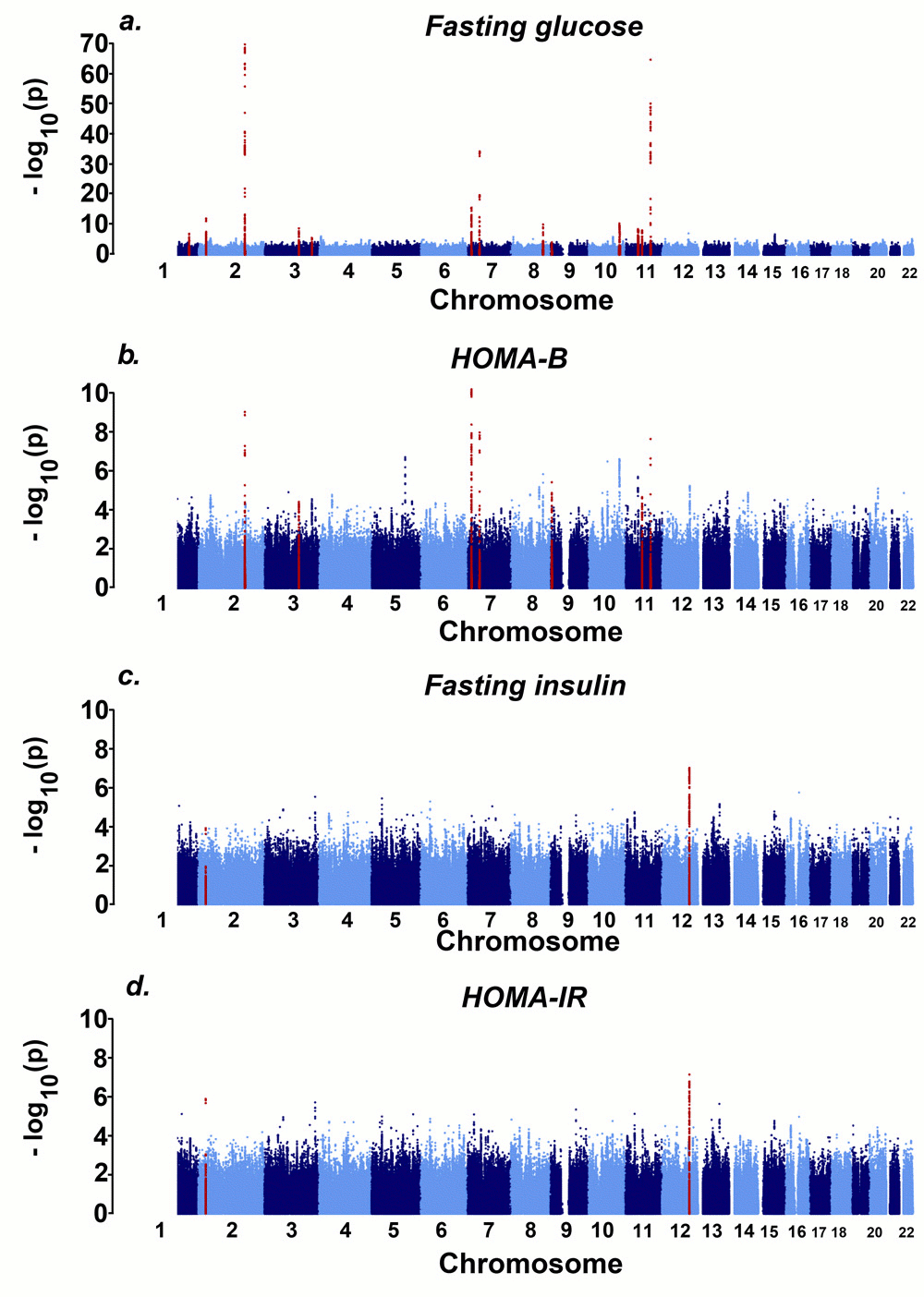Dermatitis, Diabetes, Dementia:

A team at the world-renowned Wellcome Trust Sanger Institute publishes today (Nature December 20, 2001) its analysis of the genetic code of the largest human chromosome to be sequenced to date, chromosome 20.
A treasure trove for biomedical science, chromosome 20 contains nearly 60 million DNA “letters”, and more than 720 genes – less than half of which have been fully characterized. An intriguing discovery is that the sequence also shows that two in five of us have an extra ‘chunk’ of DNA. This region appears to be an ‘insertion’ and contains at least one gene.
Chromosome 20 carries genes that are involved in Creutzfeld-Jacob syndrome (‘Mad cow’ disease), heart disease, stroke and dermatitis, as well as those that may contribute to Type II or non-insulin-dependent diabetes, and obesity. More than 30,000 SNPs – unique sequence variations vital in mapping responses to drugs and predicting disease – have also been mapped to the sequence.
“This is one more completed chapter of our genomic anatomy textbook – medical research will be using this information for decades to come in its quest to tackle our common diseases. Once again we are seeing the fruits of the two key commitments of the Human Genome Project: to make sequence freely available and to produce a quality finished sequence.”
Dr Mike Dexter Director of the Wellcome Trust
“Beyond the high-quality sequence lie our challenges to identify and to understand the genetic information embedded in DNA code. Our work on chromosome 20 shows what can be achieved using the rapidly developing sets of public data and tools for analysis. This flowering in freely available resources will bring a rich harvest in understanding.”
Dr Panos Deloukas Leader of the project at the Sanger Institute
“Our Institute is a major partner in the human and mouse genome projects – the Sanger team has helped speed up research in labs all over the world. This high-quality sequence is like a finely-tuned engine that will drive researchers towards medial benefits more rapidly and more smoothly. We look forward to finishing the fine tuning of the remaining chromosomes in the coming months.”
Dr Allan Bradley Director of the Wellcome Trust Sanger Institute, who has found the human chromosome 20 sequence to be invaluable in his own work on the mouse genome
“My diabetes research team has benefited enormously from the chromosome 20 sequence. We used the mapped draft sequence as it became available – and now the finished sequence – and have been able to close in on the likely gene on chromosome 20 that is altered in type II diabetes. The Wellcome Trust Sanger Institute is to be congratulated for this contribution to humanity.”
Francis Collins MD who is Director of the US National Human Genome Research Institute, Bethesda Maryland, and leads the US contribution to the Human Genome Project
The Wellcome Trust Sanger Institute, which is sequencing one-third of the human genome, has recently received funding of around UKP350 million over the next five years, including funds for state-of-the-art computing infrastructure. The cash injection will allow the Institute to take its work into the post-genomic era. The Human Genome Project has a commitment to producing the highest quality sequence of the human genome. The Project is expected to finish all the human chromosomes by 2003, the fiftieth anniversary of the prediction of the structure of DNA by Francis Crick and James Watson in Cambridge, England.
More information
- The Wellcome Trust Sanger Institute was founded in 1992 as the focus for the UK sequencing effort of the human genome. In 1995 the Wellcome Trust announced its decision to support the Institute’s proposal to spearhead a major international sequencing programme to produce the human sequence map. The Institute is responsible for the completion of the sequence of approximately one-third of the human genome, specifically chromosomes 1, 6, 9, 10, 13, 20, 22 and X. Much of this work is being undertaken in collaboration with other genome centres, which are sequencing specific regions of these chromosomes, or with research scientists who are searching for specific genes.
- Sanger Institute Website: https://www.sanger.ac.uk/
- Chromosome 20 in Ensembl
- In December 1999, a team from the Wellcome Trust Sanger Institute working with international colleagues announced the sequence of chromosome 22, the first human chromosome to be fully sequenced. In June 2000, the first working draft of the human genome was completed by the international Human Genome Project consortium. Detailed sequencing and mapping papers of the Human Genome Project were published in Nature on 12 February 2001. The final sequencing phase continues and is on target for completion in 2003.
- The Wellcome Trust Sanger Institute is housed on the Wellcome Trust Genome Campus, which is also home to the European Molecular Biology Laboratory’s (EMBL) European Bioinformatics Institute (EBI) and the Medical Research Council’s Human Genome Mapping Project Resource Centre.
The Human Genome Project is an international collaboration to map and decipher the information contained within human genome. Twenty research groups from six countries (Britain, China, France, Germany, Japan and USA) are involved. Data from the Human Genome Project is available free to researchers worldwide at http://www.ensembl.org - Dr Allan Bradley, previously a Howard Hughes Medical Institute Investigator at the Baylor College of Medicine in Houston, Texas, took up his Directorship of the Wellcome Trust Sanger Institute in November 2000.
- The Wellcome Trust is an independent research-funding charity, established under the will of Sir Henry Wellcome in 1936. It is funded from a private endowment which is managed with long-term stability and growth in mind. The Trust’s mission is to foster and promote research with the aim of improving human and animal health.
- Website: http://wellcome.org
- The Wellcome Trust spent approximately UKP120 million on human genome sequencing at the Wellcome Trust Sanger Institute up to end 2001.


